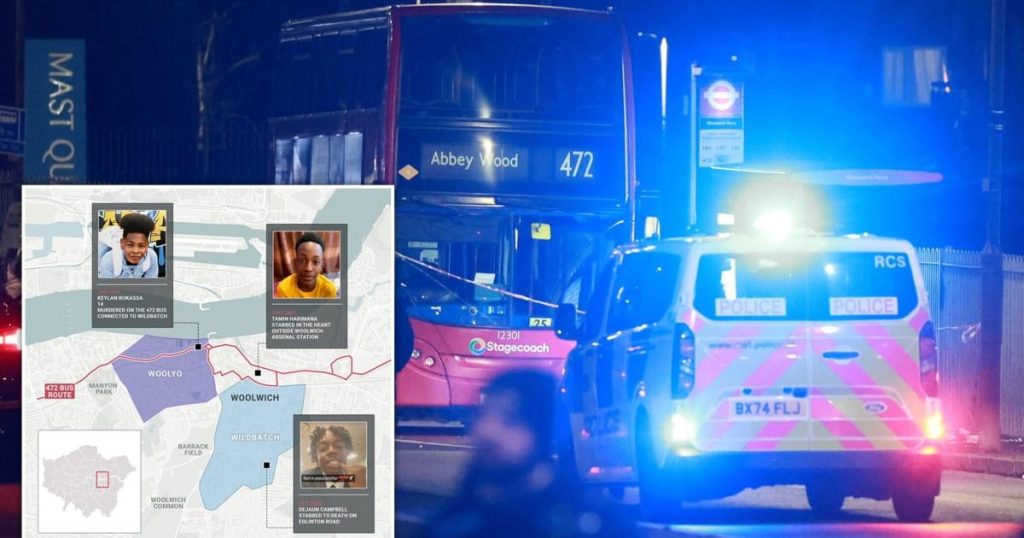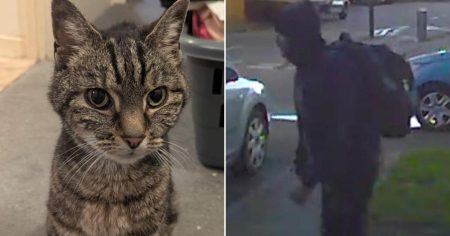The Grim Reality of Postcode Wars and Gang Violence: A Case Study of Woolwich
The tragic death of 14-year-old Kelyan Bokassa, stabbed to death after boarding a bus in Woolwich, underscores the disturbing prevalence of gang violence and postcode wars gripping London. This incident, occurring just a day after another stabbing left an 18-year-old student critically injured less than a mile away, highlights the escalating tensions and the vulnerability of young people caught in the crossfire. These incidents are not isolated events but rather grim chapters in a larger narrative of gang warfare playing out in the streets of East London. The area is plagued by a fierce rivalry between gangs vying for control of the lucrative drug trade, resulting in a surge of violence and leaving a trail of fear and devastation in its wake.
At the heart of this conflict are the Wildbatch and WoolyO gangs, locked in a bitter battle for dominance in the Woolwich area. The Wildbatch gang operates primarily in the Barnfield estate, Kelyan’s home, while the WoolyO gang, boasting over 300 members, holds sway near the Woolwich Docks. Their territorial disputes, fueled by the pursuit of control over the drug market, have transformed neighborhoods into battlegrounds. The violence isn’t confined to fistfights or minor skirmishes; it has escalated to the use of deadly weapons, including machetes and knives. Reports even suggest the Woolwich Boys, a group possibly linked to either of the two main gangs, have used meat cleavers in attacks against drug rivals, illustrating the brutal nature of these conflicts.
The tragic irony of Kelyan’s death lies in the context of his life. His mother, Mary Bokassa, reveals the heartbreaking truth that her son, like many others, was “groomed” and "taken advantage of" by local gangs. He was preyed upon, drawn into a dangerous world of violence and fear, a world that ultimately claimed his life. The day he was killed was supposed to be a fresh start – his first day back at school, filled with the pride of wearing his uniform. But the shadow of gang violence eclipsed that hope, leaving his mother to grieve a life lost too soon and a future tragically unrealized. Kelyan’s story is a chilling testament to the insidious nature of gang recruitment, which often targets vulnerable young people and draws them into a life of crime and violence.
The interconnectedness of these gangs adds another layer of complexity to the situation. The Wildbatch gang is affiliated with Zone 2 in Peckham and TG in Plumstead Common, while WoolyO has connections to GS28 in Thamesmeade and Parkside in Belvedere. This network of affiliations extends the reach of the violence, making it more difficult to contain and exacerbating the sense of fear and insecurity within the community. Before his death, Kelyan, who had links to Wildbatch, posted online asking for a "mindi," the Somali word for knife, just an hour before the fatal attack. He was also due in court on charges of carrying a machete into Ravensbourne College. This tragic sequence of events paints a poignant picture of a young life consumed by the escalating violence.
Kelyan’s story is tragically not unique. Just three months prior, his friend DaeJaun was stabbed to death a mere mile and a half away, his dying words a desperate plea: “I’m 15, don’t let me die.” Three teenagers were subsequently charged with his murder. Beyond these individual tragedies, a string of violent incidents has plagued the Woolwich area. A man in his 20s was stabbed outside a gym in May 2023 during a robbery attempt, and a vicious knife fight erupted outside a Footlocker store shortly thereafter. These incidents, caught on camera and circulating publicly, further underscore the pervasive nature of knife crime and the normalization of violence within the community.
The tragic death of 15-year-old Tamim Ian Habimana in July 2021 outside Woolwich Arsenal station provides yet another stark illustration of the senseless violence plaguing the area. Tamim was stabbed in the heart by a gang seeking revenge for a previous stabbing. Although Tamim was not involved in the initial incident, he became a victim of misplaced retribution. This case highlights the tragic consequences of gang violence, where innocent lives are often caught in the crossfire of retaliatory attacks. The conviction of a 17-year-old for possessing an offensive weapon and conspiring to commit violent disorder in connection with this case underscores the legal efforts to address the issue, but the underlying problem of gang culture and knife crime persists.
The recurring theme of youth violence emphasizes the urgent need for intervention and prevention strategies. The grooming and exploitation of vulnerable young people by gangs highlight the failure of existing social structures to provide adequate support and guidance. The easy accessibility of weapons, coupled with a culture of fear and retaliation, creates a volatile environment where even seemingly minor disputes can escalate into deadly confrontations. Addressing this complex issue requires a multi-pronged approach involving law enforcement, community outreach programs, and social services working together to break the cycle of violence and offer young people alternative paths to a brighter future. The stories of Kelyan, DaeJaun, and Tamim serve as stark reminders of the human cost of this ongoing crisis and the urgent need for effective solutions.











